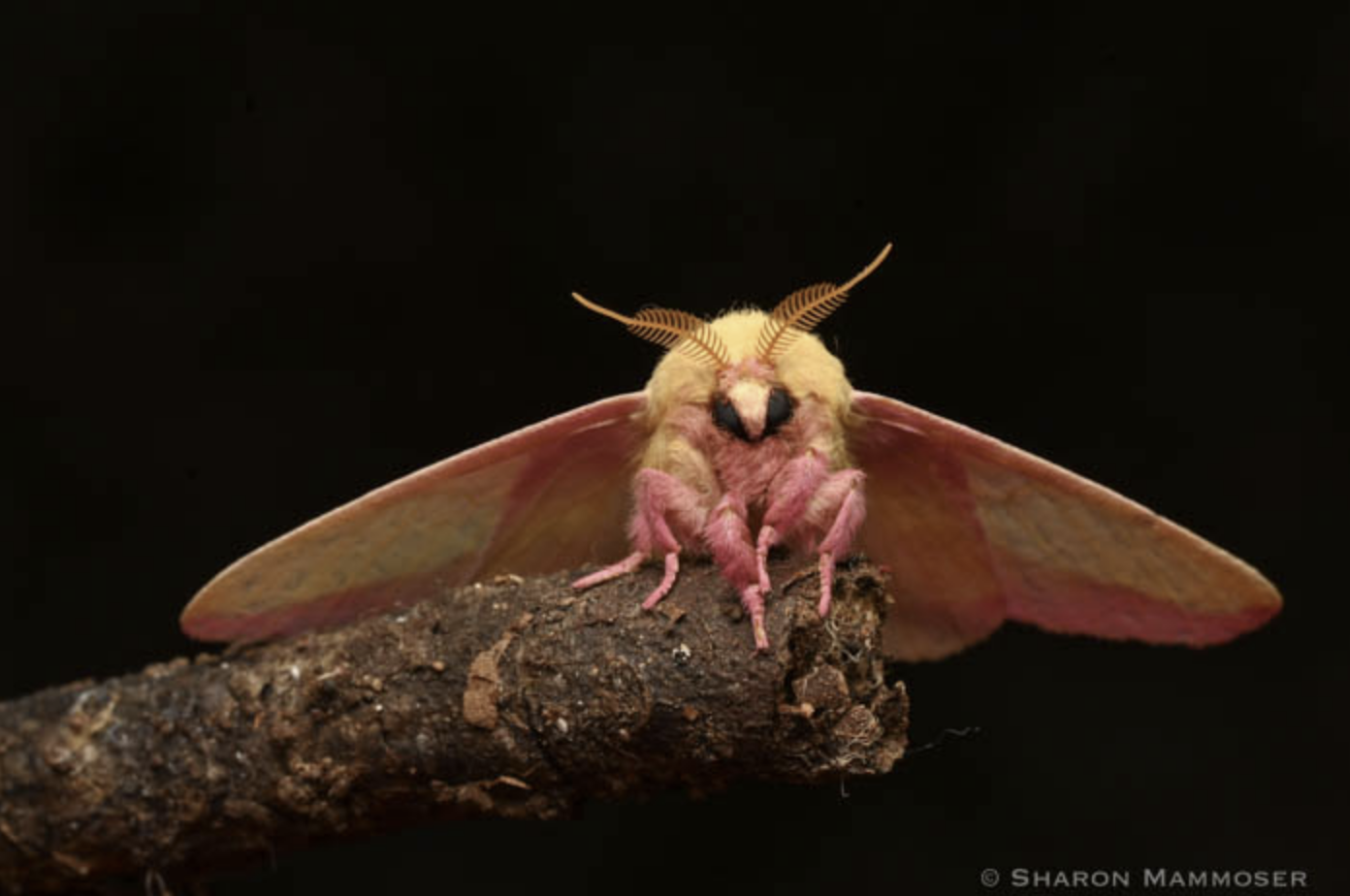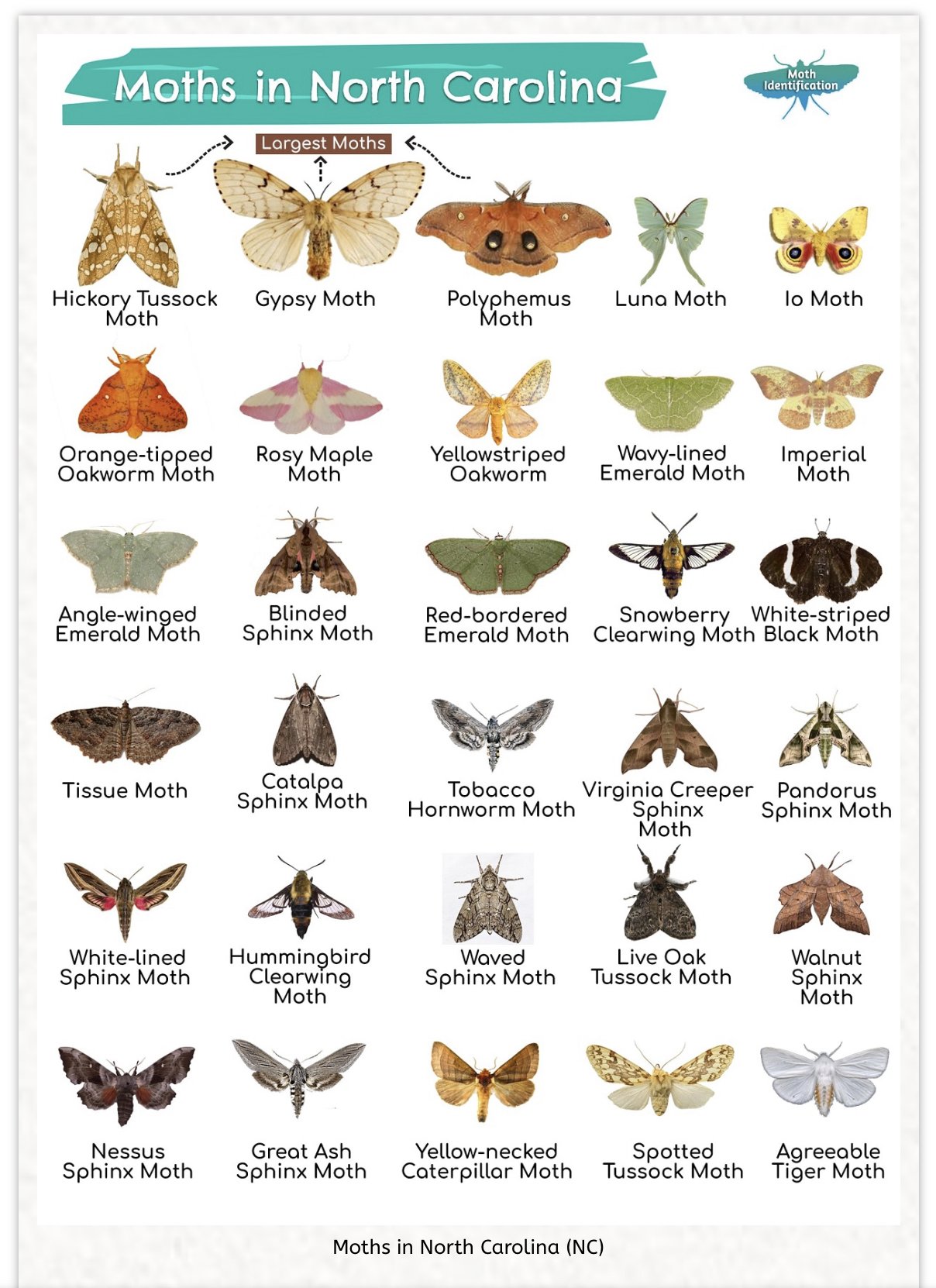Beyond the Butterflies … Let’s Talk Moths!
Yes, we know just how extraordinary butterflies are and all of the passionate gardeners on the GFLP team work hard to garden with these ecosystem heros in mind. However, while we’ve been busy learning about which keystone native plant supports which species of butterfly, many of us have missed just how critical moths are to the big wide world of pollination and ecosystem function.
Enter Jim McCormac. Jim recently published, with co-author Chealsea Gottfried, the groundbreaking book, Gardening For Moths. It is a book focusing on moths of the Midwest and yet, the majority of species described can also be found in the Carolinas. The vivid photography and detailed descriptions reveal a whole new world that even the most avid nature enthusiast may not be familiar with.
Check out what Doug Tallamy has to say about Jim’s latest book:
“We love our beautiful butterflies, but we could love our moths, too, if we fully appreciated their essential role in nature. Moths and their caterpillars transfer more energy from plants to other animals than any other herbivores. A landscape without moths is a landscape without birds and many other animals. In Gardening for Moths, Jim McCormac and Chelsea Gottfried tell us how to bring these wonderful creatures into our landscapes and into our lives.”
The more we learn about moths, the more we love them!
Did you know …
Moth diversity is nine times that of butterflies and while there are 17,500 species of butterflies, there are more than 150,000 species of moths.
Moths serve many important roles in the ecological food web from pollinator, to predator of invasive insects, to providing a valuable food source, and more.
Moths come is a vast variety of shapes and sizes and have adapted some pretty amazing traits: Some moths mimic wasps and some even mimic bird poop to make them look less tasty; some fly during the day; some don’t eat because they don’t even have a mouth; some moths make a squeaking sound to out-smart bats and some hawk moths can fly up to 30 mph!
In North Carolina alone there are approximately 100 moth species listed as “of special concern”.
It is estimated that over 75% of U.S. homeowners garden. That said, many gardeners have butterflies front of mind when designing and planting pollinator gardens. Supporting this trend there are countless resources out there identifying the host plants and food sources for specific butterflies. But what about the moths? Information is scarce and that is what makes Jim and Chelsea’s work so important.
Gardening For Life Project and Jim McCormac
Jim McCormac has been on our radar as a potential GFLP speaker for a while. He is an entertaining presenter, an impassioned and dedicated conservationist and advocate for all things wild. On the heels of our March 4th, 2023 Gardening For Life Celebration, with Doug Tallamy as the featured speaker, and having just gotten our hands on a copy of Gardening for Moths, we jumped on the chance to invite Jim to town.
Drum roll please … we are excited to share that our 2024 GFL Celebration Keynote Speaker will be none other than Jim McCormac. This event happens on March 30th, 2024. Visit 2024 Gardening For Life Celebration to learn more.
Jim’s talk: Mysterious Moths: Growing the Darker Side of Butterflies
Jim shares … “Our enchantment with butterflies isn’t surprising. These daytime flyers are easily observed and collectively encompass a rainbow palette of colors punctuated with ornate patterns. However, their close relatives the moths overwhelm butterflies in species diversity and sheer numbers. Most moths are nocturnal and largely out of sight and mind. Nonetheless, they are one of the most important animal groups. Moths are inextricably intertwined with native plants, bats, birds, and the whole of the eastern deciduous forest ecosystem. They play an enormous role in the pollination of native plants and over the eons have spurred the evolution of myriad defensive plant compounds to ward off caterpillar herbivory. In addition, they are often far more interesting than butterflies, both visually and behaviorally. This talk will be a pictorial journey into an intriguing and little known world that unfolds all around us. We can greatly benefit the ecosystem around us by “moth-gardening” in our yards.”
About Jim McCormac
Wildlife diversity, capturing and sharing the wonders of the natural world via photography, binoculars in hand and birding the day away … these things and more light Jim up!
Jim worked for the Ohio Department of Natural Resources for 31 years as a botanist, and later specializing in wildlife diversity projects for the Division of Wildlife. He has authored or coauthored six books, including Birds of Ohio (Lone Pine 2004); and Wild Ohio: The Best of Our Natural Heritage (Kent State University Press 2009). The latter won the 2010 Ohioana Book award. He is a coauthor of the Ohio Breeding Bird Atlas II book. His book, Gardening for Moths, in collaboration with Chelsea Gottfried, was released in February 2023. Jim writes a column, Nature, for the Columbus Dispatch, and regularly published a natural history blog. He has written numerous articles in a variety of publications, and has delivered hundreds of presentations throughout the eastern United States. He was named 2015 Conservation Communicator of the Year by the Ohio League of Sportsmen. Jim is an avid photographer, shooting a range of natural history subjects. He has had hundreds of photos published in various forums, including the TV show Jeopardy!
Learn more about the wondrous world of moths via these resources:
Ever been “mothing”? Local naturalist Sharon Mammoser can be found many summer evenings with headlamp, camera, etc in hand as she checks her mothing stations in western NC. Visit her Blog to learn more about the wild and woolly world of NC moths.
Read her Moth Gardening Guide brought to you by Conserving Carolina
Night Beauties: Four Ways to Help Moths in The Garden by Nancy Lawson
The Night Shift: The Beauty and Variety of NC Moths by Mike Dunn (Walter Magazine)
Visit the GFLP Learning Center






